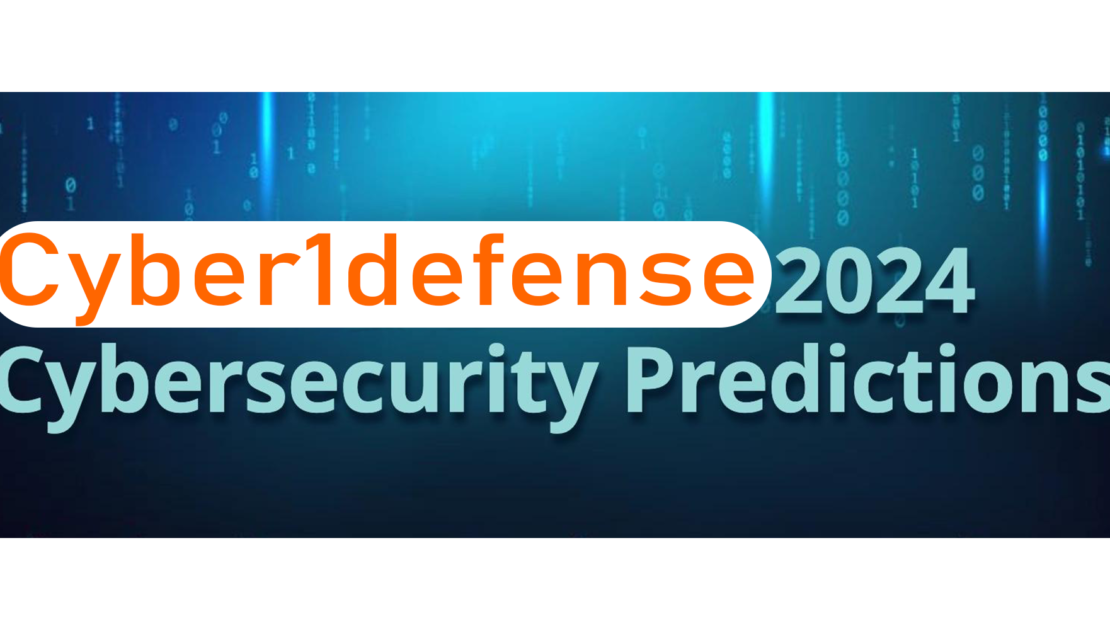[mc4wp_form id=”2320″]
Top 10 Cybersecurity Predictions and Threats In 2024
-
January 1, 2024
- Posted by: Evans Asare

The top 10 cybersecurity predictions and threats in 2024 you must look out for.
2024 is finally here, new year and new things are going to happen in the cyberspace this year. Here are our top 10 prediction and threats to watch out for in 2024.
The use of AI to make phishing harder to detect.
With AI, hackers are now going to advance their threats much harder and difficult for you to detect. Social engineering attacks involving tricking users into giving attackers access to systems will also increase. Generative AI (such as ChatGPT) tools enable more attackers to make smarter, more personalized approaches, and deepfake attacks will become increasingly prevalent. The response to this will largely revolve around organization-wide awareness and education, although AI and zero trust will play a growing role, too.
IoT (Internet of Things) Cyber Attacks
More devices talking to each other and accessing the internet means more potential “ins” for cyber attackers to take advantage of. With the work-from-home revolution continuing, the risks posed by workers connecting or sharing data over improperly secured devices will continue to be a threat. Often, these devices are design for ease of use and convenience rather than secure operations, and home consumer IoT devices may be at risk due to weak security protocols and passwords. The fact that industry has generally dragged its feet over the implementation of IoT security standards, despite the fact that the vulnerabilities have been apparent for many years, means it will continue to be a cyber security weak spot.
Less Than Zero Trust
The fundamental concept of zero trust – always verify – evolves as systems become more complex and security is integrate into business strategy. Zero trust states that there is no perimeter within which network activity can be assume to be safe. As the threat landscape evolves, this principle extends beyond the corporate network to the ecosystem of remote workers, partnered organizations and IoT devices. In 2024, zero trust moves from being a technical network security model to something adaptive and holistic, enabled by continuous AI-powered real-time authentication and activity monitoring.
Evolution of Phishing Attacks.
Phishing attacks have long been a persistent threat in the cybersecurity world, and in 2024, they continue to evolve in sophistication and effectiveness. Modern phishing attacks have become adept at bypassing traditional security measures, using more personalized and technically advanced tactics to deceive users. In the face of these advanced phishing attacks, robust authentication systems are key to enhancing security.
Cyber Security personnel in demand
In 2024, cybersecurity is a strategic priority that can no longer be put aside in the IT department. Gartner has predicted that by 2026, 70 percent of boards will include at least one member with expertise in the field. This enables organizations to move beyond reactive defense, meaning that they can act on new business opportunities that come with being prepare.
Blockchain and Cybersecurity
As we progress through 2024, blockchain technology is increasingly being recognized for its potential to significantly enhance cybersecurity measures. Blockchain, at its core, is a decentralized ledger technology known for its inherent security features like immutability, transparency, and resistance to tampering. These characteristics make it an appealing option for securing digital transactions and protecting data from cyber threats.
Cyber Warfare and State-Sponsored Cyber Attacks.
The war in Ukraine, which looks set to enter its third year, has exposed the extent to which states are willing and able to deploy cyber attacks against military and civilian infrastructure in 2024. It’s a safe bet that going forward, wherever military operations take place around the world, they will go hand-in-hand with cyber warfare operations. The most common tactics include phishing attacks designed to gain access to systems for the purposes of disruption and espionage and distributed denial-of-service attacks to disable communications, public utilities, transport and security infrastructure. Outside of warfare, major elections will take place in 2024 in countries including the US, UK and India, and we can expect an increase in cyber attacks aimed at disrupting the democratic process.
Increased Focus on AI and Machine Learning in Cybersecurity.
In 2024, AI and Machine Learning (ML) is set to play more critical role in cybersecurity. AI’s advance data analysis capabilities are increasingly use for identifying and predicting cyber threats, enhancing early detection systems. ML algorithms are evolving to better recognize and respond to new threats, improving defensive measures over time. Expect to see AI algorithms providing real-time threat analysis in 2024, enabling faster and more accurate responses to cyber incidents. ML will likely advance to adapt and update cybersecurity protocols autonomously, reducing reliance on manual updates.
Cyber Security Regulation.
Governments and organizations are becoming increasingly aware of the risks to national security and to economic growth posed by cyber threats. The potential social and political fallout of large-scale data breaches is also a major factor in the emergence of new regulations around cyber security issues. For example, businesses in the UK have until April 2024 to ensure they are compliant with the Product Security and Telecommunications Act, which sets out minimum security requirements that network products must adhere to (for example, they mustn’t be ship with a default password).
Ransomware and sextortion target selection.
Expect to see the attack focus shift from data for extortion to exploitable data for sale. Bad actors will focus more on selling exploit and vulnerability information about a business rather than performing the ransom themselves.
Over this past year, we have already seen the purpose of an attack evolve from personally identifiable information (PII) and protected health information (PHI) to spyware, malware, and ransomware. We have even seen where ransomware attacks have leveraged exfiltrated data for extortion.
Note: To stay safe on the internet and protect your data from hackers is to practice cybersecurity hygiene. Stay updated always. Cyber1defense is here to help you to safeguard your online presence.
